The warm spring breeze brought a tiny bundle of feathers to Martha’s backyard. It was a baby bird, new and fully dependent on its parents. Martha felt a strong urge to help, knowing the right knowledge and approach were key.
Caring for baby birds that are orphaned or injured is both delicate and rewarding. It’s important to know their special dietary needs and how to feed them. Whether you’re an experienced birdwatcher or just love nature, knowing what to feed baby birds is crucial for their survival.
Key Takeaways
- Baby birds eat the same food as their parents, like insects, seeds, and worms.
- Altricial baby birds need to be fed every 30 minutes during the day.
- Precocial baby birds can eat chick starter or turkey starter.
- Don’t give baby birds milk, as it can upset their stomachs.
- If you find an injured or orphaned baby bird, contact a wildlife rehabilitation center.
Identifying Orphaned Baby Birds
Seeing a young, featherless baby bird on the ground can be worrying. It’s key to know the difference between nestlings and fledglings. They need different care. Helping without knowing can actually hurt them more.
When to Intervene
Fully feathered young birds (fledglings) found alone are usually okay. Their parents are likely close by, helping them. Unless they look hurt or you’re sure they’re abandoned, just watch from afar.
If you find a bald or downy baby bird (a nestling) on the ground, it might have fallen from its nest. You should call a wildlife rehabilitation center for advice on what to do next.
Distinguishing Nestlings from Fledglings
- Nestlings are young, bald or downy birds that have not yet developed their full feathers.
- Fledglings are fully feathered young birds that have recently left the nest but are still under the care of their parents.
- Fledglings may appear awkward on the ground, but their parents are likely nearby, providing food and guidance.
- Nestlings, on the other hand, are unable to hop, walk, or grip tightly, and they require immediate attention.
Always watch from a distance and don’t interfere unless you must. Calling a wildlife rehabilitation center is the best way to make sure the baby bird gets the right care.
Preparing a Warm Environment
For baby bird care, keeping the right temperature is key. Newborn baby birds without feathers need a heat lamp at least 12 inches away. A 40-watt bulb works best to keep baby birds warm in a safe environment.
To create the ideal nest, put the baby bird in a small basket or bowl. Line it with toilet paper to keep it upright. Then, place the nest in an aquarium or a closed space to keep the temperature right, between 95°F-97°F (35°C-36°C).
Heat Lamp Setup for Nestlings
A heat lamp is vital for nestlings (baby birds without feathers). Here’s how to set it up:
- Keep the heat lamp at least 12 inches from the nest to prevent overheating.
- Use a 40-watt bulb for the right warmth.
- Watch the temperature and adjust the lamp’s distance to keep it between 95°F-97°F (35°C-36°C).
- Put the nest in an enclosed space, like an aquarium, to keep the warmth in.
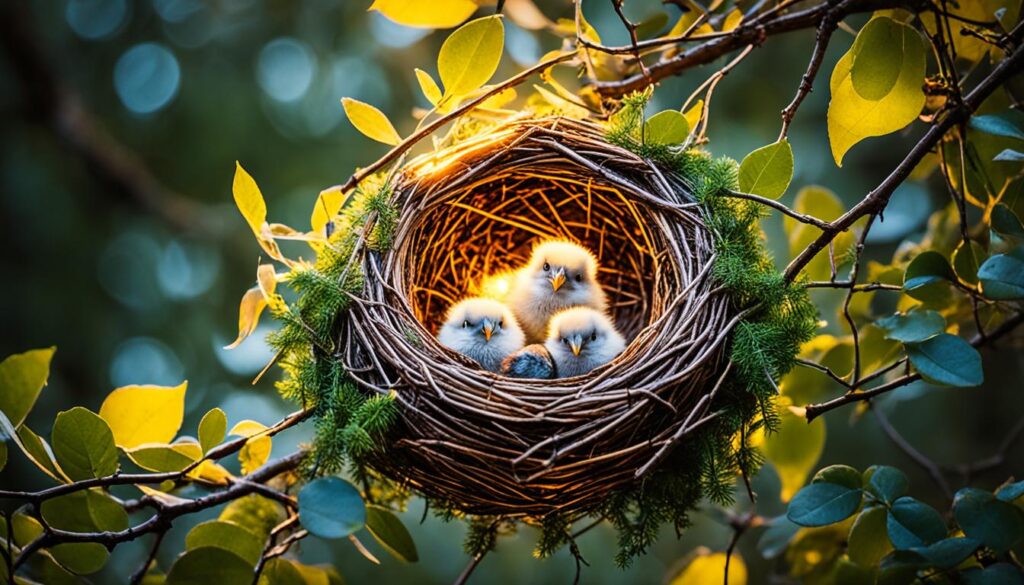
Creating a warm environment for your baby bird helps them survive and start life healthy.
Feeding Schedule for Altricial Birds
Caring for baby birds that can’t feed themselves means following a strict feeding schedule. These young birds need food every 30 minutes, just like their parents do. This keeps them healthy and happy.
Never give baby birds milk as it can make them sick. Instead, mix soaked mynah bird pellets or dry dog food with baby food, cooked turkey, egg yolk, and a bit of water. This mix gives them the nutrients they need to grow strong.
“Baby birds should be fed 6-10% of their body weight at each feed to support their rapid growth and development.”
Chicks that are less than a week old need to be fed every 1-2 hours. Those with closed eyes need food every 3-4 hours. As they grow, you can start feeding them 4-6 times a day when they have open eyes and feathers starting to show.
When baby birds start to wean, they might lose 10% of their weight. Keep an eye on them and adjust their food schedule as needed. With care and patience, they’ll learn to find their own food and live on their own.
The feeding schedule for baby birds depends on their age and how developed they are. Always talk to experts in wildlife care or bird vets to make sure you’re feeding them right.
Ideal Baby Bird Diet
Feeding baby birds the right food is key for their growth. Insects are the best food for them because they have lots of energy and nutrients. Baby birds that can’t fly yet need a special soft food mix.
Soft Food Mixture
To make a good soft food mix for baby birds, use these ingredients:
- Soaked mynah bird pellets or dry dog food
- Baby food (fruit or vegetable-based)
- Cooked, finely chopped turkey or chicken
- Cooked egg yolk
This mix gives baby birds the protein, vitamins, and minerals they need to grow strong.
Introducing Natural Foods
When baby birds get bigger, start giving them natural foods like seeds and fruits. This helps them learn to feed themselves and get ready for the wild. In the wild, they’ll need to find their own food.
By giving baby birds a varied and nutritious diet, you help them grow into healthy, independent birds.
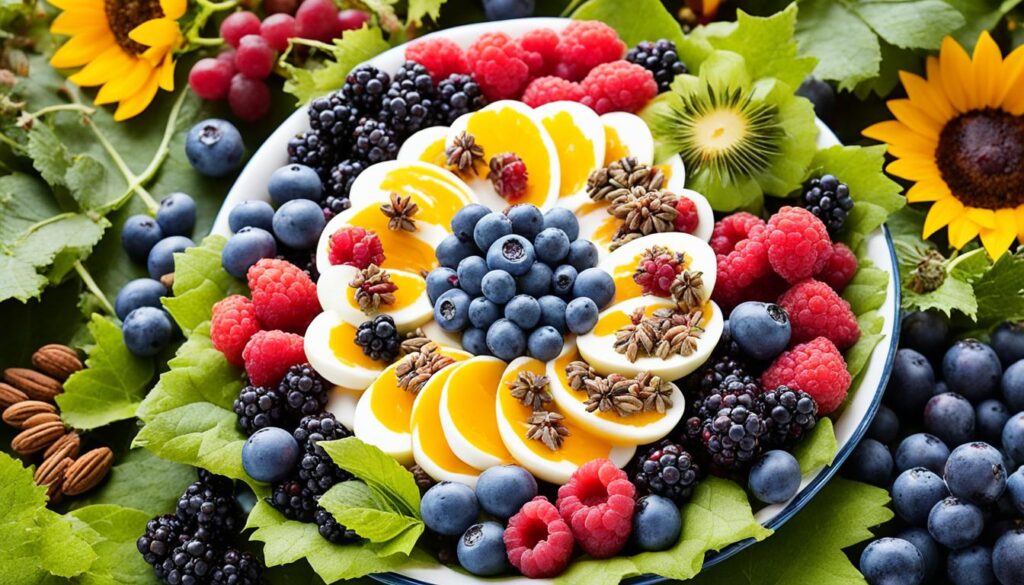
Caring for Fledgling Birds
When baby birds open their eyes and grow feathers, they become fledglings. At this point, it’s important to help them learn to feed themselves. Offer them foods like insects, seeds, and fruits in their enclosure. This helps them get ready to live on their own and eventually return to the wild.
Encouraging Self-Feeding
Fledgling birds are learning to find and eat food by themselves. To help them, give them natural foods such as:
- Live mealworms, a great source of protein
- Sunflower seeds
- Waxworms
- Soaked fruits
- Soft, natural treats
Don’t give them whole peanuts because they can choke on them. Also, avoid bread because it’s not good for birds. Make sure cats stay inside at night to protect the fledgling birds.
Put the food on the ground in safe spots. This teaches the fledgling birds to feed themselves. Learning to be independent is key for their survival in the wild. By caring for fledgling birds and helping baby birds learn to self-feed, you’re helping them become independent.
What can I feed baby birds?
Feeding orphaned or injured baby birds needs a special diet for their fast growth. They should mainly eat insects. Insects give them the energy and nutrients they need to survive.
Insect-based Diet
Mealworms, crickets, and other small insects are key foods for baby birds. These foods are full of protein, just like what adult birds feed their babies. Giving them this diet helps them grow strong muscles, bones, and feathers.
Supplementing with Seeds and Fruits
- As the baby birds get older, you can add small amounts of seeds, berries, and soft fruits to their diet.
- These foods give them more nutrients and help them learn how to eat naturally. This gets them ready to live on their own.
- Make sure the seeds or fruits you give them are the right size and easy to digest.
By giving them a diet rich in insects and adding some seeds and fruits, you help them grow well. Good food is key for their survival and getting better.
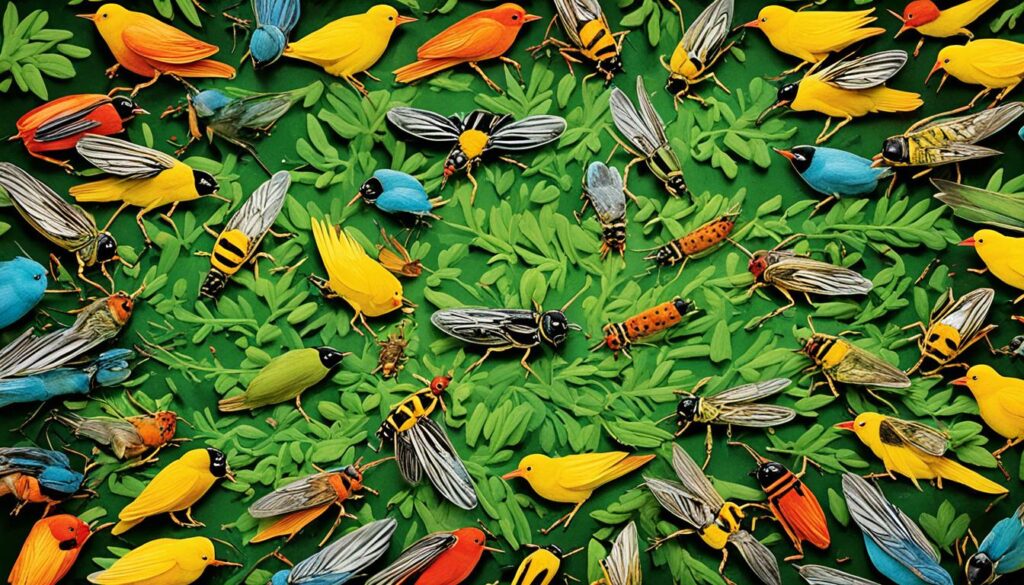
“Raising a clutch of a small species like a chickadee requires thousands of caterpillars, emphasizing the substantial quantity of food needed to support the growth and development of baby birds.”
Precocial Baby Bird Care
Caring for precocial baby birds, like ducklings and goslings, is different from altricial species. They thrive on a chick starter or turkey starter diet. You can find this special food at local feed stores.
Chick Starter and Water Setup
An upside-down Mason jar on a plate with a curved edge is great for water setup for these birds. Make sure they don’t swim until they grow new feathers, which takes about 3-4 months.
For precocial baby birds, a precocial bird diet is key. Chick starter feeds are perfect for these young, self-feeding birds.
“Precocial birds take 3 to 4 months to rehabilitate before they can eat and fly on their own.”
- Keep precocial birds in a box with 1/2″ ventilation holes. Increase the space as they grow.
- When the bird is healthy and eating, start introducing solid bird foods. This helps them get ready for the wild.
Handling and Hygiene
When you care for baby birds, it’s key to handle them right and keep things clean. Start by always washing your hands before and after touching the birds or their food. This step stops diseases from spreading to these young birds.
Don’t use towels or fabrics that could hurt the baby birds’ claws. Choose smooth, safe surfaces for handling them. Keep their living area clean to stop germs from getting in. Keeping things clean and safe is vital for the birds’ health.
- Wash hands thoroughly before and after handling baby birds or their food
- Avoid using towels or fabrics that could catch the birds’ claws
- Maintain a clean, secure environment to minimize disease risks
By doing these things, you can keep handling baby birds and maintaining hygiene when caring for baby birds right. This helps prevent diseases and keeps the birds healthy.
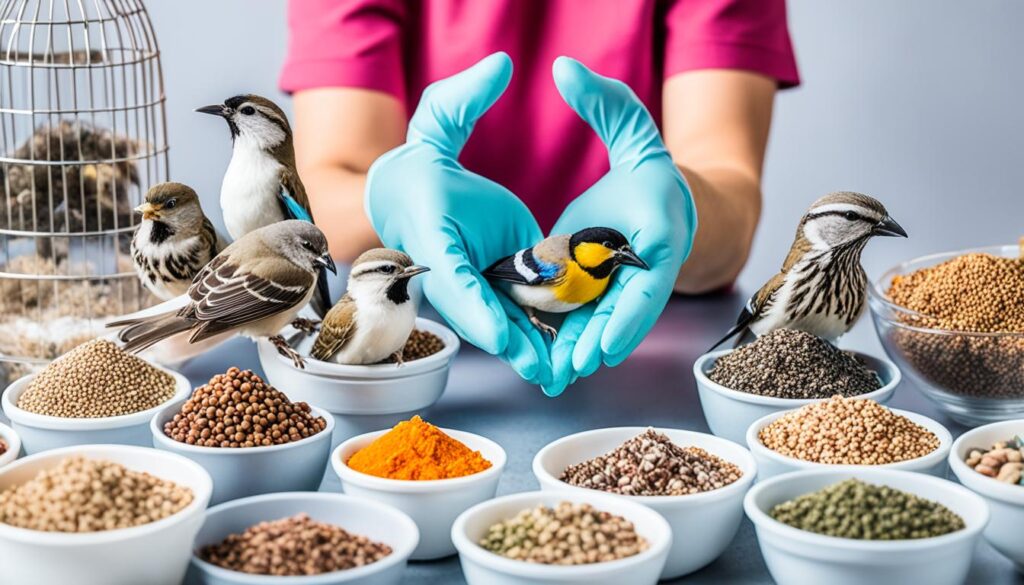
“Proper handling and hygiene are essential when caring for baby birds to ensure their health and safety.”
When to Seek Professional Help
If you find a baby bird that looks hurt, sick, or is a nestling that has fallen, call a local wildlife rehab center. These experts can give the right medical care. They make sure the baby bird gets the food and home it needs to get better.
Signs of Injury or Illness
Watch for these signs that mean the baby bird might need help:
- Swelling or visible injuries
- Closed or crusted eyes
- Inability to stand or feed themselves
- Lethargy or signs of distress
Even if the baby bird looks okay, a nestling that has fallen from its nest needs help. Seeking professional help for baby birds is key to make sure they get the care they need.
“More than 1 billion birds die every year from hitting windows. Outdoor cats, both wild and domestic, kill many birds and other wildlife. Professional wildlife rehab centers are the best places for birds with injuries from windows or pets.”
Licensed wildlife rehabbers can treat birds with injuries from windows or pets. When to contact wildlife rehabilitation centers is key for giving injured or sick baby birds a good chance to live and return to the wild.
It’s important to watch a fallen baby bird for any signs of internal injuries. Provide warmth and care right away to stop shock. Calling a professional wildlife rehab center is the best way to seek help for baby birds in trouble.
Feeding Tips and Precautions
Caring for baby birds is a delicate task. When baby bird feeding tips, it’s key to not overfeed. Only feed until the bird’s crop, the pouch on its neck, looks full. It’s important to introduce natural foods gradually and never give baby birds milk because it can upset their stomachs.
Use a popsicle stick or straw to feed the baby bird softly. Make sure not to force it into the bird’s mouth. Precautions when feeding baby birds are vital for their safety. Wrong feeding methods can cause problems, so always follow safe feeding practices for baby birds.
Prompt action within the first few minutes of finding an injured baby bird can significantly impact its chances of survival.
- Keep baby birds warm 24/7 to ensure their survival.
- Avoid spoon-feeding and syringe-feeding to prevent aspiration of food into the bird’s lungs.
- Contact a wildlife rehabilitation center if intervention is necessary for fledgling birds.
Remember, inexperienced individuals should contact an experienced person before trying to feed fluids or food to baby birds. This helps avoid bad outcomes. Proper care, like keeping them warm, quiet, and giving them the right fluids and food, can help them recover.
Monitoring Growth and Development
When you care for a baby bird, watch its growth and development closely. Look for important milestones like when its eyes open, feathers grow, and it starts to feed itself. Keeping a regular feeding schedule and environment helps the bird grow and become independent.
Tracking baby bird development is key for their health. Watch for these signs of healthy growth:
- Gradual weight gain and increase in size
- Feather development, starting with downy feathers and transitioning to mature plumage
- Opening of the eyes, usually within the first week or two
- Ability to perch, flap wings, and eventually fly short distances
- Interest in self-feeding and gradually accepting solid foods
Keep a close eye on baby bird growth and seek vet or wildlife rehab advice if you see any worrying signs. By creating a caring environment and tracking the baby bird’s progress, you help it grow into a healthy bird.
“Observing the growth and development of baby birds is a rewarding experience that allows us to appreciate the incredible resilience and adaptability of these fascinating creatures.”
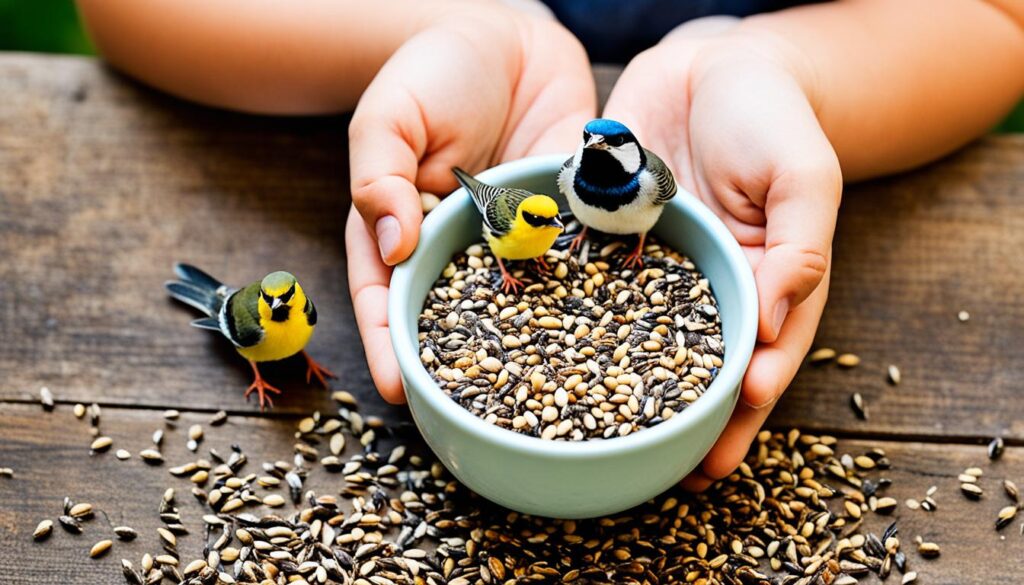
Each bird species has its own needs and growth pace. It’s crucial to learn about the specific needs of the baby bird you’re caring for. With patience, effort, and a focus on tracking baby bird development, you can greatly support their health and well-being.
Releasing Rehabilitated Birds
When a baby bird is fully healed and ready, it’s time to release it back into the wild. This means moving it to a bigger space with more natural things to help it adjust. The aim is to make sure it can live well on its own in nature.
Getting baby birds ready for release is a big step. Only about one-third of baby wild birds make it to their first year. So, making sure rehabilitated birds can survive is crucial. By doing things right, you can help a rehabilitated baby bird live well in the wild.
For a successful reintroduction to the wild, it’s important to let the bird practice being a bird. This means letting it forage, fly, and be around other birds. You can do this by giving it a bigger space with more natural things. This helps it get its instincts back and be on its own.
The releasing rehabilitated baby birds process might include a “soft release.” This means the bird gets used to its new home before being fully on its own. This can make it easier for the bird to live in the wild.
By preparing baby birds for release with care, you’re giving them a great chance to survive and fit back into the wild. It’s a fulfilling process that helps birds and the environment.
Enjoying Backyard Birding Responsibly
As bird lovers, we often want to help every baby bird in our yards. But, it’s key to know that helping can sometimes do more harm than good. By being responsible, we can support birds and protect their nests without hurting them.
Watch birds from afar and only help if you’re sure they need it. Bird feeding is most helpful during extreme temperatures, migration, late winter, and early spring when seeds are scarce. In summer, birds eat insects, so feeding them isn’t usually needed, except for hummingbirds and goldfinches.
Keep feeders safe by placing them 12 feet from trees or bushes to keep predators away. Also, put them more than 30 feet or less than 3 feet from windows to stop birds from hitting them. Clean and sanitize feeders often to keep them healthy for the birds.
Wild birds will find other food if you’re not home, especially in suburbs. By being responsible, we can support wild bird populations and protect nesting birds. This way, we can enjoy backyard birding responsibly for a long time.
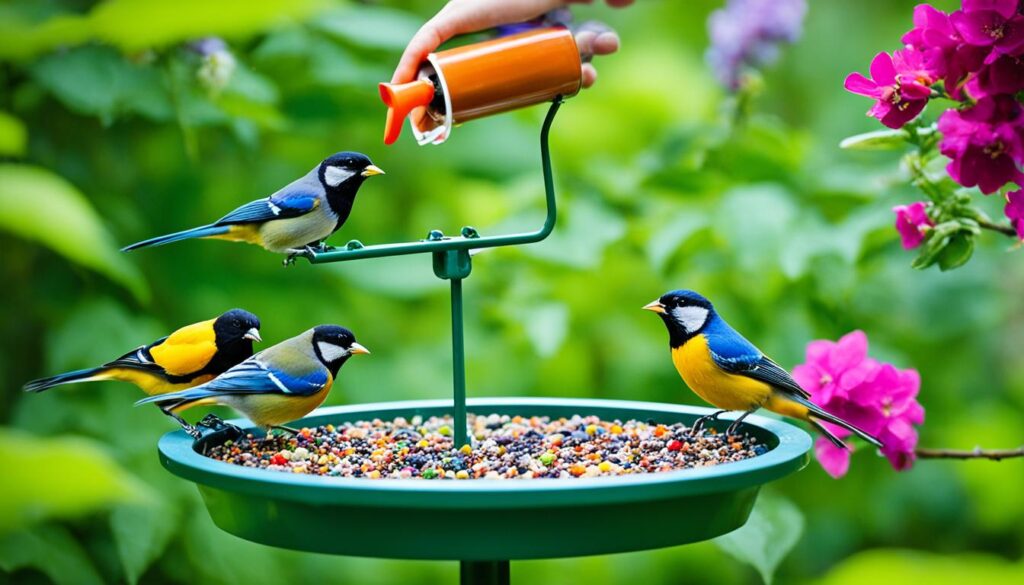
“The best way to attract birds to your yard is to create a habitat that meets their basic needs – food, water, shelter, and nesting sites.” – National Audubon Society
Conclusion
Caring for baby birds is a delicate task. It’s about giving them the right food and home while letting them grow naturally. Knowing what baby birds need to eat and how to set up their space is key. Also, knowing when to get expert help is crucial.
Always put the baby birds’ well-being first. If you’re unsure, talk to wildlife experts. Important tips include keeping the right temperature, feeding them at the right times, and giving them the right food. Watch for any signs they might be sick or hurt.
For more info on caring for baby birds, check with local wildlife centers or online resources. Being well-informed and responsible can help these birds thrive. This way, you can make a big difference for these amazing creatures.
FAQ
What can I feed baby birds?
Baby birds eat the same food as their parents. This includes insects, seeds, and worms. The parents hunt for food, then soften it before feeding their young.
When should I intervene if I find a baby bird?
Leave baby birds alone unless they seem injured or abandoned. The parents are likely nearby. But, if you find a very young, bald, or downy baby bird, it might have fallen from its nest and could need help.
How do I create a warm environment for a baby bird?
Use a heat lamp at least 12 inches away with a 40-watt bulb for tiny baby birds. Put the baby in a small basket or bowl lined with toilet paper to keep it upright.
How often should I feed an altricial baby bird?
Feed altricial baby birds every 30 minutes all day. They rely on their parents for food, so mimic their feeding schedule.
What is the ideal diet for baby birds?
Baby birds should eat mainly insects for energy and nutrients. Use a mix of soaked mynah bird pellets, dry dog food, baby food, turkey, and cooked egg yolk for altricial baby birds.
How do I encourage a fledgling bird to self-feed?
Encourage fledglings to eat on their own by offering natural foods like insects, seeds, and fruits. This helps them learn to be independent and prepares them for release into the wild.
What can I feed precocial baby birds?
Precocial baby birds, like ducklings and turkey poults, can eat on their own. Feed them chick starter or turkey starter, available at feed stores.
What should I know about handling and hygiene when caring for baby birds?
Always wash your hands before and after handling the birds or their food. Avoid using towels that could trap the birds’ claws. Keep their environment clean and safe for their health.
When should I seek professional help for a baby bird?
Call a local wildlife rehabilitation center if you find a baby bird that looks injured, ill, or is a nestling that has fallen. Experts can give the right medical care and help with their diet and recovery.
How do I properly feed a baby bird?
Feed the bird until its crop is full. Start with natural foods and avoid milk, which can upset their stomachs. Use a popsicle stick or straw to feed them, being careful not to force it.
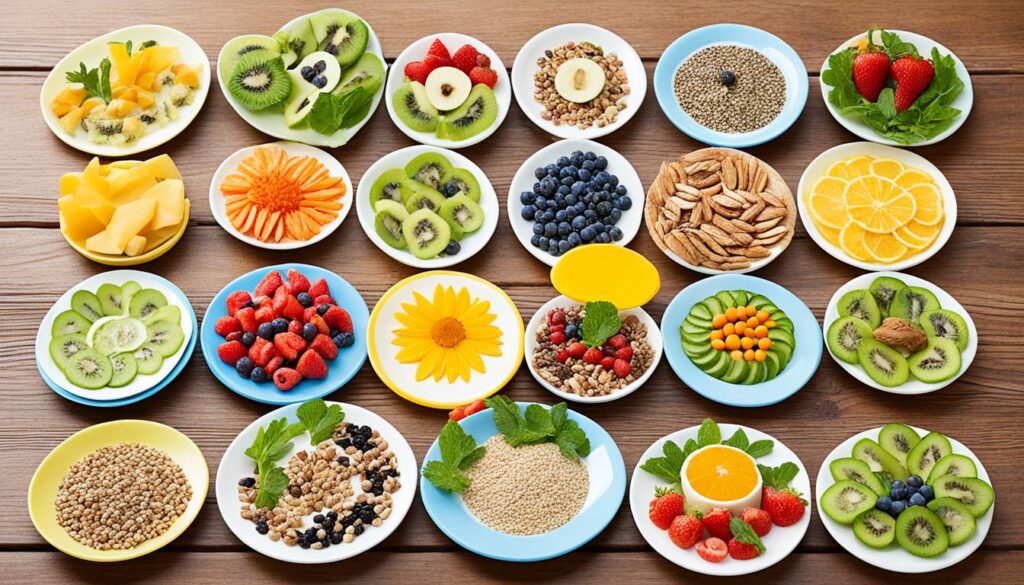

купить аккаунт продажа аккаунтов соцсетей
безопасная сделка аккаунтов перепродажа аккаунтов
заработок на аккаунтах купить аккаунт
продажа аккаунтов маркетплейс аккаунтов
покупка аккаунтов гарантия при продаже аккаунтов
магазин аккаунтов https://kupit-akkaunt-top.ru/
гарантия при продаже аккаунтов заработок на аккаунтах
Secure Account Purchasing Platform Account marketplace
Database of Accounts for Sale Purchase Ready-Made Accounts
Secure Account Sales Buy Account
Buy and Sell Accounts Account Buying Platform
Guaranteed Accounts Account Purchase
Buy and Sell Accounts Social media account marketplace
Sell accounts Website for Buying Accounts
Buy Pre-made Account Account exchange
Database of Accounts for Sale Secure Account Purchasing Platform
Account Selling Service Sell Pre-made Account
purchase ready-made accounts https://accountsmarketplaceonline.com/
account trading platform account exchange
profitable account sales buy pre-made account
account exchange gaming account marketplace
account trading service account trading platform
purchase ready-made accounts buy account
account market account buying service
account selling service account trading platform
It is actually a great and useful piece of information. I am satisfied that you shared this helpful
info with us. Please keep us up to date like this.
Thanks for sharing.
My web-site: nordvpn coupons inspiresensation
account exchange service secure account sales
purchase ready-made accounts account selling platform
online account store website for buying accounts
account exchange service account trading
secure account purchasing platform database of accounts for sale
social media account marketplace accounts marketplace
gaming account marketplace guaranteed accounts
buy account accounts for sale
account market account catalog
account market account buying platform
account buying platform secure account purchasing platform
verified accounts for sale account market
accounts marketplace account sale
buy accounts online account store
account selling platform account exchange service
account store guaranteed accounts
guaranteed accounts account catalog
account trading service buy account
nordvpn promo code 350fairfax
Great blog! Do you have any recommendations for aspiring writers?
I’m hoping to start my own blog soon but I’m a little lost on everything.
Would you suggest starting with a free platform like WordPress or go for a paid option?
There are so many choices out there that I’m completely overwhelmed ..
Any tips? Thanks!
accounts marketplace https://accounts-offer.org
account trading platform buy accounts
account acquisition https://buy-best-accounts.org
guaranteed accounts buy accounts
account store accounts market
accounts marketplace https://social-accounts-marketplace.xyz/
gaming account marketplace https://buy-accounts.space/
ready-made accounts for sale https://buy-accounts-shop.pro
account selling service https://buy-accounts.live/
find accounts for sale buy accounts
account buying service account market
buy pre-made account accounts-marketplace-best.pro
биржа аккаунтов https://akkaunty-na-prodazhu.pro
покупка аккаунтов https://rynok-akkauntov.top/
маркетплейс аккаунтов https://kupit-akkaunt.xyz
маркетплейс аккаунтов соцсетей akkaunt-magazin.online
маркетплейс аккаунтов akkaunty-market.live
продать аккаунт kupit-akkaunty-market.xyz
маркетплейс аккаунтов akkaunty-optom.live
купить аккаунт online-akkaunty-magazin.xyz
биржа аккаунтов https://akkaunty-dlya-prodazhi.pro/
продажа аккаунтов https://kupit-akkaunt.online
fb account for sale https://buy-adsaccounts.work
buy facebook account https://buy-ad-accounts.click/
buy aged fb account buy ad account facebook
buy fb account https://buy-ads-account.click
buy facebook advertising accounts https://ad-account-buy.top
buy ad account facebook https://buy-ads-account.work
facebook ad account for sale https://ad-account-for-sale.top
cheap facebook advertising account buying fb accounts
buy aged facebook ads account https://ad-accounts-for-sale.work
buy google ads agency account https://buy-ads-account.top
buy google adwords account https://buy-ads-accounts.click
buy a facebook ad account https://buy-accounts.click
adwords account for sale buy aged google ads account
buy google adwords account https://ads-account-buy.work
google ads account for sale https://buy-ads-invoice-account.top
buy google adwords accounts https://buy-account-ads.work
buy google adwords account https://buy-ads-agency-account.top